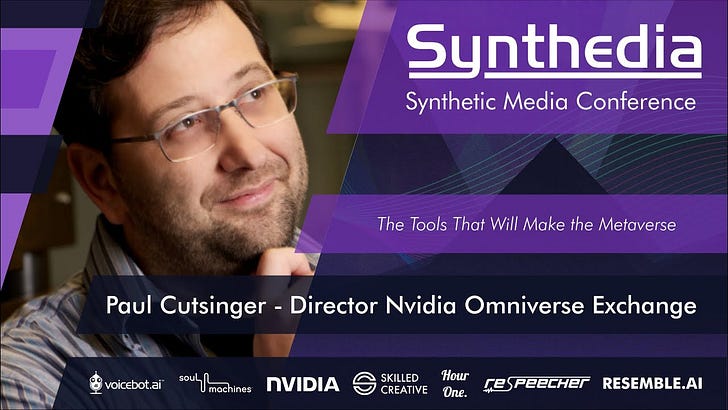The metaverse will be built with synthetic media. Paul Cutsinger laid out a practical vision of how virtual worlds will be built and how Nvidia’s Omniverse solution will act as a hub for large scale simulation environments in last month’s Synthedia conference.
This is an interesting presentation in the video above. It is easy to look at Nvidia’s product stack, which includes a synthetic speech engine and capabilities for virtual humans, and think that is where the company is headed in terms of synthetic media. However, Nvidia CEO Jenson Huang has continually talked about simulation environments. Nvidia knows a lot about creating virtual worlds because they provide the GPUs that already make these possible in gaming. A simulation environment can be a virtual world in the metaverse.
Nvidia as a Software Maker
You may wonder why the world leader in GPU production is focusing so much on software these days. Well, aside from “software eating the world,” it makes sense at a tactical business level.
Nvidia is taking a page out of Intel’s famous “Job 1” strategy book. Intel created products and supported companies that could catalyze higher microchip sales volume. Job 1 was to sell more chips. If other products were upstream of Job 1, they were often in a position to receive Intel support.
3D virtual worlds that will make up the metaverse are going to need a lot of GPUs. It’s in Nvidia’s interest to help the process along. Metaverse virtual worlds and applications are upstream of even greater GPU demand.
The company is creating software and an integration platform that can help this process along. Cutsinger shows several simulation environments in his presentation and notably demos some pretty compelling enterprise applications. The general storyline is that the metaverse and virtual worlds will be for consumers. Cutsinger shows how enterprises might actually be the first catalysts behind broad metaverse adoption.
Let me know what you think about the video.





